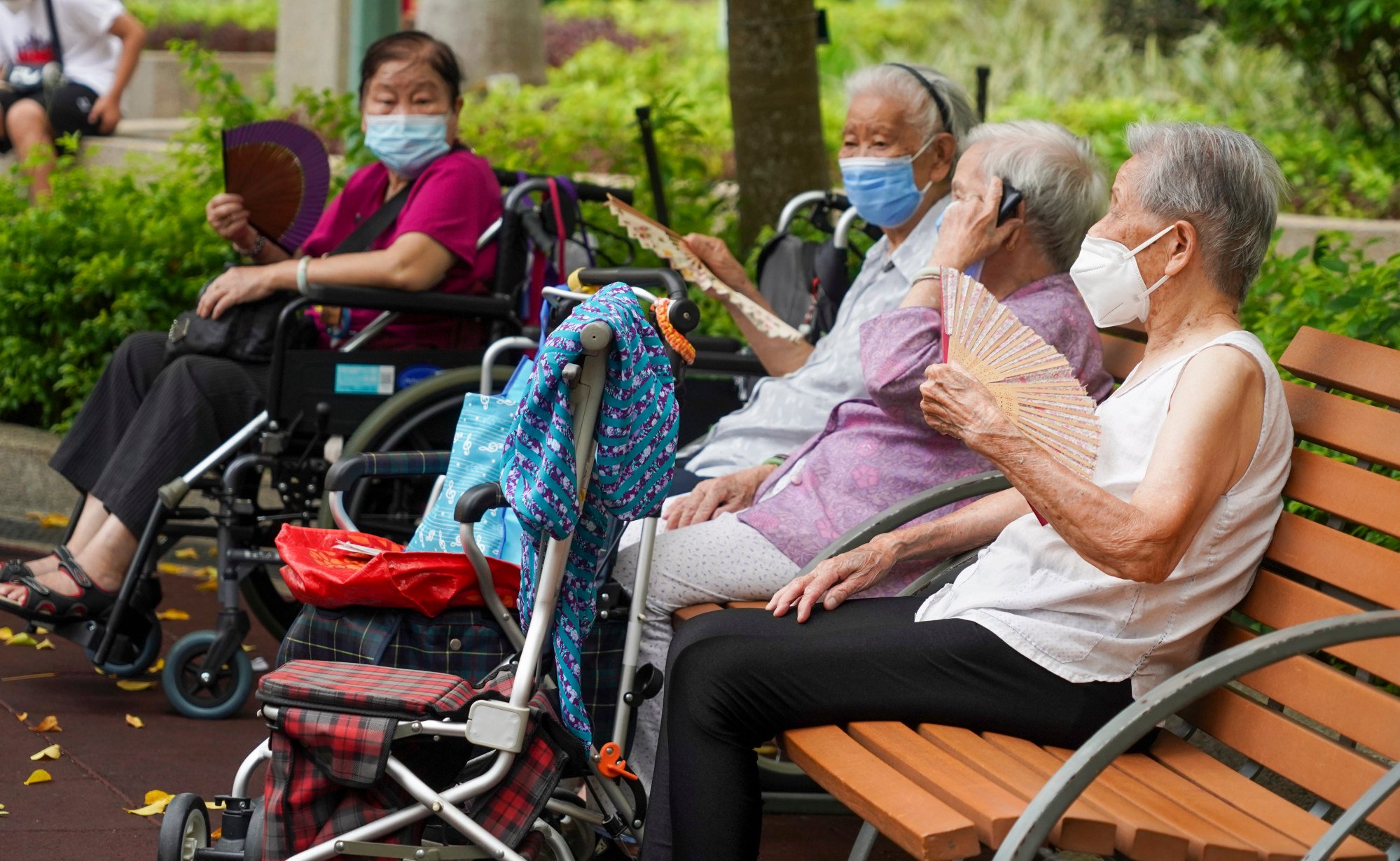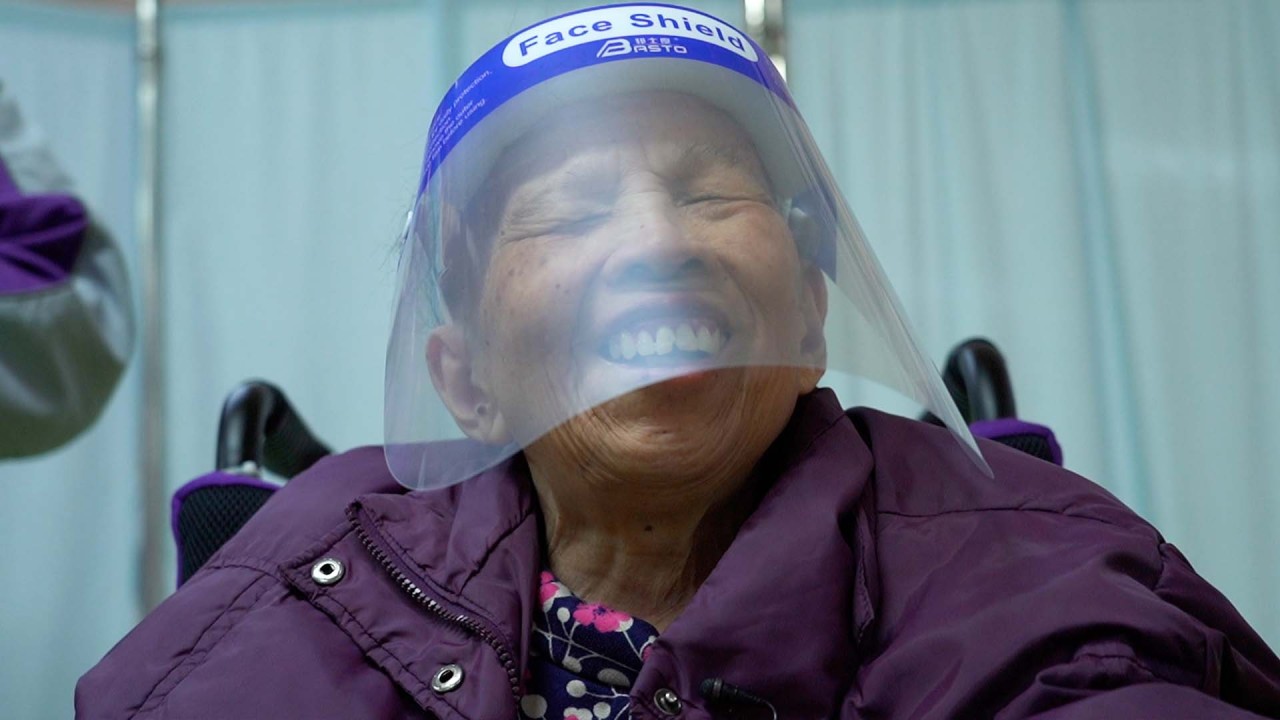
Who’s in hospital for Covid? Data shows most Hong Kong inpatients are elderly from community instead of care homes, prompting strategy rethink; 3,805 cases logged
- New trend deviates from start of fifth wave when Omicron variant swept across care homes
- Officials racing for measures to prevent healthcare system from being overwhelmed
Hong Kong’s rising rate of Covid-19 patients in hospitals is fuelled by infections of elderly residents who are not in care homes, the Post has learned, with experts calling for a rethink on how to prevent the city’s healthcare facilities from being overwhelmed.
The trend deviated from earlier in the fifth wave, in which Omicron infections swept across more than 90 per cent of care homes citywide.
The latest data obtained by the Post showed that out of 1,190 current Covid-19 inpatients, 75 per cent were aged above 65, with only 10 per cent from care homes.
Of those 60 or older, only 17 were critically ill, with another 38 in a serious condition. This meant most Covid-19 patients in local hospitals were elderly residents from the community who had mild symptoms.
The revelation came as health authorities announced the quarantine policy would be adjusted to allow residents infected with new Omicron subvariants to isolate at home if their living conditions allowed, even as the daily caseload on Wednesday climbed to its highest level since a surge in infections began in early June.
Hong Kong on Wednesday logged 3,805 new infections, including 180 imported cases, and one related death. The city’s overall Covid-19 tally stands at 1,304,579 cases, with 9,445 fatalities tied to the virus.
Dr Chuang Shuk-kwan, from the Centre for Health Protection, said the new arrangement applied to infections of the more transmissive Omicron subvariants BA.2.12.1, BA.4 and BA.5 reported from Wednesday, while patients staying at government-run facilities could leave after completing isolation.
“We have looked at cases of the new subvariants and found that their severity is similar to other Omicron subvariants such as the dominant strain BA.2.2,” Chuang said.
Covid-19 outbreaks at Hong Kong hospitals grow as leader warns of resources drain
People infected with the new subvariants were earlier subjected to mandatory isolation at government-run facilities, while BA.2.2 cases are allowed to undergo home quarantine if their residence is deemed suitable.
As of Monday, the city had uncovered 1,093 cases of BA.2.12.1 locally and 372 involving either BA.4 or BA.5. Half of these cases are symptomatic.
Chuang said the previous measure was not “very effective” as patients who contracted the subvariants had to wait for genome sequencing results at home for one to three days before being sent to the facilities.
“We have done a lot of work to isolate those who caught BA.2.12.1, BA.4 and BA.5. But we saw that the subvariants are still spreading in the community and more cases have emerged,” she said.
“Although the degree of transmission is slower than we expected, it is quite difficult to prevent them from spreading as they are too transmissive.”

Officials are scrambling to stem overloading in hospitals after city leader John Lee Ka-chiu warned earlier this week that coronavirus patients would take up a quarter of public healthcare resources by the end of the month, forcing a cutback in other services.
Chuang had earlier cited rising overseas rates of Covid-19 patients needing hospital treatment, such as in Britain and Australia, voicing fears the same thing could happen locally.
Grace Li Fai, chairwoman of the Elderly Services Association of Hong Kong, said while the number of care homes reporting infections had crept up from 24 in early June to 60 by the end of that month, and about 100 by early July, each of those facilities was only reporting low single-digit cases.
“The situation now is very different from what we saw at the start of the fifth wave, where the virus spread so rapidly across care homes,” Li said. “As we now have to take rapid antigen tests every day for staff and residents, with a PCR test for workers once every week, most transmission chains can be cut off very early on.”
Kenneth Chan Chi-yuk, operator of a home for the elderly, said the natural immunity from past infections during the fifth wave was still holding up for most residents in care homes, while some facilities had learned their lessons and improved infection control such as installing air purifiers.
In light of the data, Li urged authorities to redouble their efforts in supporting elderly residents, especially those living on their own, to prevent a surge in hospital occupancy.
What exactly is Covid ‘hybrid immunity’ and would Hong Kong benefit?
Patients’ rights advocate Tim Pang Hung-cheong, of the Society for Community Organisation, said there had been more infected elderly in the neighbourhood reaching out for help recently.
“The government has to carry out public education better, so that the elderly know they can take advantage of the new telemedicine scheme and wait at home for doctors’ consultation and delivery of antivirals,” Pang said. “Some patients with mild symptoms do not realise they can go to government outpatient clinics for those drugs.”
The temporary holding centres in Shek Kip Mei and Siu Sai Wan run by the Social Welfare Department to take in elderly patients from care homes should also be allowed to admit those from the community to ease the pressure on hospitals, Pang said.
Latest figures from the department show the two centres have a total capacity of 340 beds, but so far only 50 are occupied.

Professor Ivan Hung Fan-ngai, a top infectious disease expert and honorary consultant in Queen Mary Hospital, said compared to elderly from the community, more care home residents were likely to have hybrid immunity obtained from previous infections during the fifth wave and vaccination.
Infected residents who were not from homes for the elderly were admitted to hospital due to underlying diseases, but most of them had mild symptoms without complications, he said.
Infectious diseases specialist Dr Ho Pak-leung from the University of Hong Kong meanwhile suggested authorities shorten a six-month interval between the second and third Covid-19 vaccine doses. He also proposed an end-August deadline for people to fulfil the three-jab requirement for the vaccine pass scheme, or risk being barred from mask-free premises.
“This will give residents who have only taken two jabs more urgency to get the third one,” Ho told a radio programme on Wednesday. “If we don’t push for this and if we have a BA.4 or BA.5 outbreak later, it will be too late.”
Ho said he also believed people aged 60 and above, and those at higher risk, should get their third vaccine dose within three months, drawing on recommendations from other experts.
Hong Kong shores up defences at care homes, requires weekly PCR tests from staff
Under the third phase of the city’s vaccine pass scheme which took effect on May 31, residents aged 12 and above must have received three shots or got their second jab within six months to enter most premises.
The new measure affects 23 types of places, including restaurants, bars, pubs, cinemas, bathhouses, gyms and beauty parlours.
At present only about 66 per cent of residents aged 12 and above have received their third jab, while 89.3 per cent aged three and above have got the second dose.
Among residents aged 60 and above, 80.24 per cent have received two jabs, while 59.27 per cent have been triple-vaccinated.

The news came as Macau said it would reopen casinos and allow some “essential” businesses, including supermarkets, pharmacies and healthcare premises, to resume normal operations from Saturday as the latest outbreak showed signs of easing.
Macau’s social affairs and culture secretary Elsie Ao Ieong-u said on Wednesday that the city would enter a “consolidation” period starting from Saturday.
“Non-essential” companies will be allowed to operate in a limited way, provided they follow certain guidelines. Kindergartens, stores within shopping malls that do not have direct access to public roads and building repair firms cannot restart business.
She explained that the government considered the ventilation capacity in casinos allowed for their reopening.
Casinos and other non-essential businesses have been closed since July 11.
Covid and closed borders: why Hong Kong has avoided inflation
The relaxed anti-Covid rules are expected to run until July 30 and officials said the government could further ease restrictions after that if conditions permitted.
Residents will still be required to do rapid antigen tests every day and submit the result to the government’s online platform over the consolidation period.
Macau reported 18 new infections on Wednesday, bringing the total number in the latest outbreak since June 18 to 1,783.
The government on Wednesday thanked Macau residents for complying with social-distancing measures since July 11.
“The government is calling for continued concerted effort from the community, with a view to reducing to the lowest possible level non-essential movement in the community during the consolidation period starting from July 23,” the authorities said.
“These joint efforts would help realise the dynamic zero Covid-19 epidemic control goal, and to enable resumption at the earliest opportunity of normal community life.”
Additional reporting by Ng Kang-chung and Rachel Yeo


